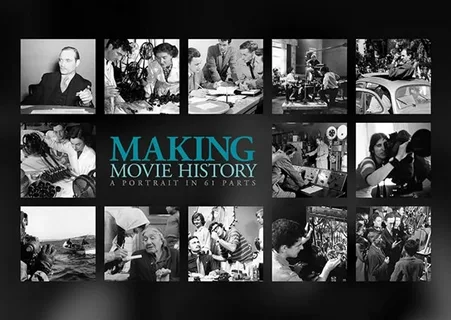The History of Movies: A Journey Through Time and Technology

The history of movies is a fascinating story of creativity, technological innovation, and cultural shifts. From its humble beginnings in the late 19th century to its current status as one of the most influential art forms in the world, cinema has undergone incredible transformations. In this article, we’ll explore the milestones that defined the evolution of movies and how they continue to shape modern society.
The Birth of Cinema
The origins of cinema can be traced back to the late 1800s. Early filmmakers were inspired by a desire to capture motion and recreate reality. The first significant step towards the invention of movies was the development of the motion picture. Thomas Edison and his assistant, William Kennedy Laurie Dickson, created the Kinetoscope in 1891, a device that allowed individual viewers to watch short moving pictures. This marked the beginning of the move towards projected films for public audiences.
In 1895, the Lumière brothers, Auguste and Louis Lumière, perfected the cinematograph, a projector and camera that allowed films to be viewed by a larger audience. The first public screening of their film, Workers Leaving the Lumière Factory, is considered the birth of cinema as we know it today.
Silent Films and the Rise of Hollywood
During the early 20th century, movies were predominantly silent. The silent film era gave rise to legendary figures such as Charlie Chaplin, Buster Keaton, and Douglas Fairbanks, who captivated audiences with their physical comedy and expressive performances. The lack of synchronized sound meant that actors had to rely heavily on visual storytelling, gestures, and title cards to convey dialogue and emotions.
In the 1910s and 1920s, Hollywood began to emerge as the center of the film industry, thanks in part to the founding of major studios like Universal, Paramount, and Warner Bros. The glamour of Hollywood and the growth of the film industry attracted talented filmmakers, actors, and crew members, making it the epicenter of global cinema.
The Advent of Sound and Color
One of the most significant milestones in movie history was the introduction of synchronized sound. In 1927, The Jazz Singer, a film starring Al Jolson, became the first talkie, where actors' voices were synchronized with their on-screen movements. This breakthrough revolutionized cinema, making it more immersive and realistic. The transition from silent films to sound was not without its challenges, with some actors and directors struggling to adapt to the new technology.
By the 1930s, color films began to emerge, with Technicolor becoming the industry standard. The vivid colors in films like The Wizard of Oz (1939) and Gone with the Wind (1939) helped transport audiences into a new world of visual possibilities, adding depth and richness to the storytelling.
The Golden Age of Hollywood
The 1930s to the 1950s is often referred to as the Golden Age of Hollywood, a period when the studio system was at its peak. During this time, film stars such as Humphrey Bogart, Marilyn Monroe, and James Stewart became household names, while directors like Alfred Hitchcock, Frank Capra, and John Ford created some of the most iconic films in history.
The era saw the rise of genres such as film noir, musicals, and epics, and movies began to reflect and shape social attitudes. Films like Citizen Kane (1941) pushed the boundaries of storytelling, exploring complex themes with innovative techniques that would influence generations of filmmakers.
The New Hollywood and Modern Cinema
By the late 1960s and 1970s, the traditional studio system began to crumble, and a new generation of filmmakers emerged, often referred to as New Hollywood directors. These filmmakers, including Steven Spielberg, George Lucas, and Martin Scorsese, brought fresh ideas, groundbreaking special effects, and more adult themes to mainstream cinema. Movies like Star Wars (1977) and Jaws (1975) changed the way films were made, paving the way for the modern blockbuster era.
The 1980s and 1990s saw the rise of CGI technology, allowing filmmakers to create visual effects that were previously unimaginable. Movies like Jurassic Park (1993) and The Matrix (1999) showcased the power of computer-generated imagery, transforming the visual landscape of cinema.
The Digital Revolution and Streaming
The 21st century has seen yet another transformation in the film industry, driven by the digital revolution. Filmmakers began transitioning from traditional film stock to digital cameras, which allowed for more flexibility, lower costs, and quicker editing. Movies like Avatar (2009) used cutting-edge 3D technology to create immersive worlds, while films like The Social Network (2010) and The Revenant (2015) utilized digital filmmaking techniques to push the boundaries of storytelling.
The rise of streaming services like Netflix, Hulu, and Amazon Prime has also changed the way people consume movies, offering convenience and access to a wide variety of films. In turn, this has created a new era of television and film content, where limited series and films are being produced and released directly to digital platforms.
Conclusion
The history of movies is a testament to the power of imagination and innovation. From the silent films of the early 1900s to the digital and streaming revolution of today, cinema has continuously evolved, offering new ways to tell stories, push creative boundaries, and entertain audiences around the world. As technology advances, so too will the future of film, ensuring that cinema remains an important and dynamic part of our cultural fabric for generations to come.
- Arts
- Business
- Computers
- Oyunlar
- Health
- Home
- Kids and Teens
- Money
- News
- Recreation
- Reference
- Regional
- Science
- Shopping
- Society
- Sports
- Бизнес
- Деньги
- Дом
- Досуг
- Здоровье
- Игры
- Искусство
- Источники информации
- Компьютеры
- Наука
- Новости и СМИ
- Общество
- Покупки
- Спорт
- Страны и регионы
- World


